There’s nowhere in the world like Berlin, and it’s impossible not to fall in love this young, progressive and alternative city.
It’s a place that actively nurtures some of Europe’s best nightlife, and shines as a bulwark against gentrification, as one of the only cities in Europe enforcing a rent cap.
Berlin has experienced more than its share of trauma, and it bears the scars of its wartime obliteration and imposed post-war partition with dignity.
Monuments like the Reichstag Building, and the palatial galleries of the UNESCO-listed Museumsinsel (Museum Island) fuse the old with the new.
Berlin has its gaze fixed on the future, but if you want to dip into the city’s history there are countless monuments that have witnessed pivotal global events, as well as museums to help you unpack Berlin’s difficult past.
1. Reichstag Building
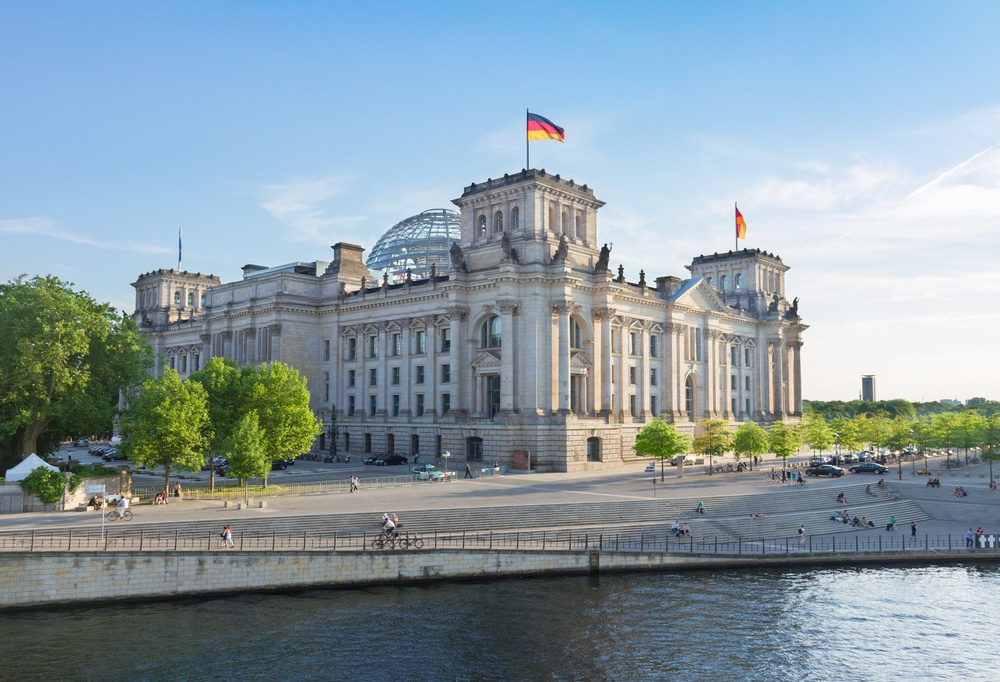 Source: Neirfy / Shutterstock
Source: Neirfy / ShutterstockToday the seat of Germany’s federal parliament, the Reichstag Building embodies both Berlin’s tumultuous history and its present as the capital of Europe’s largest democracy.
Completed in 1894 to a design by Paul Wallot (1841-1912) this monument was the site of a massacre in 1920, and then the Reichstag fire in 1933 gave Hitler the pretext to consolidate his grip on Germany.
The fire damage wasn’t even fully repaired when the building was caught up in the Allied bombing of Berlin. And in 1945, one of the conflict’s most enduring photographs, Raising a Flag over the Reichstag was taken from the roof.
Like many of Berlin’s monuments the Reichstag Building, reworked in the late-90s by Norman Foster, melds the old and the new.
The old neo-Baroque cupola was replaced by a glass dome, open to the public via a spiral walkway. You can also book a guided tour of the building, and if your German is up to scratch you can sit in on a plenary session.
2. Brandenburg Gate
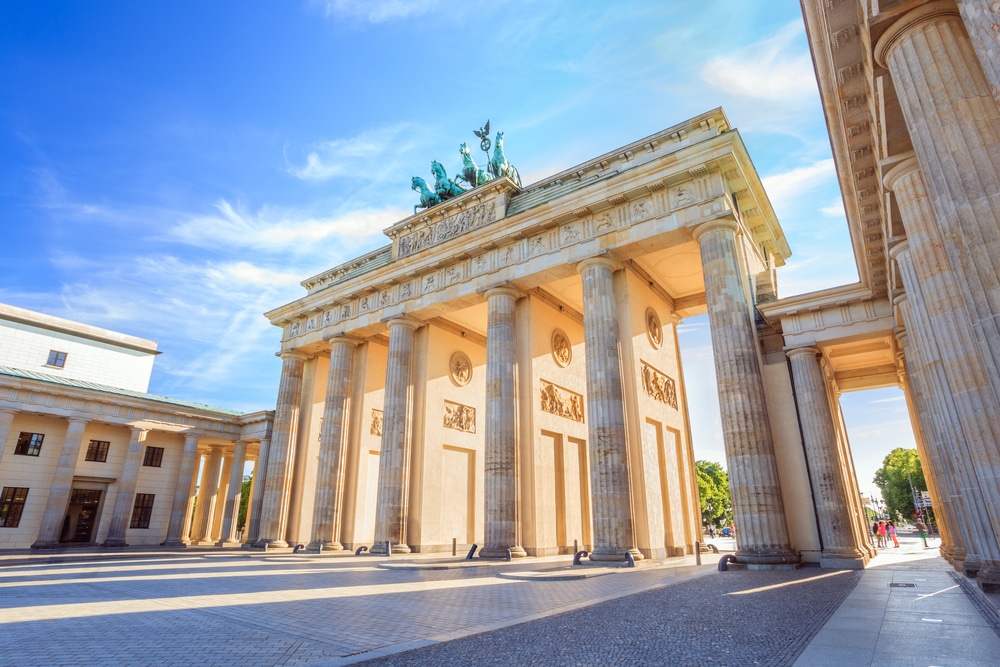 Source: Noppasin Wongchum / Shutterstock
Source: Noppasin Wongchum / ShutterstockA rousing landmark for Berlin, Germany and even Europe as a whole, the Brandenburg Gate (1791) is the first sight many people picture when they think of Berlin.
The design for this grand sandstone structure with 12 Doric columns topped by an entablature, is adapted from the Propylaea at the Acropolis.
The Brandenburg Gate is crowned with a Quadriga, a sculpture group of a chariot driven by the goddess Victoria and driven by four horses. In Victoria’s right hand is the Iron Cross, wreathed with oak leaves and crowned with an eagle.
The location for the Brandenburg Gate doesn’t tally with Berlin’s old defensive walls, but rather with a customs wall for levying taxes on goods brought into the city, imposed in the 1730s.
The gate forms a bold entrance way onto the refined Unter den Linden, an avenue lined with prestigious buildings and leading to the site of the old City Palace, seat of the Prussian monarchs, at what is now the Museumsinsel.
3. Pergamon Museum
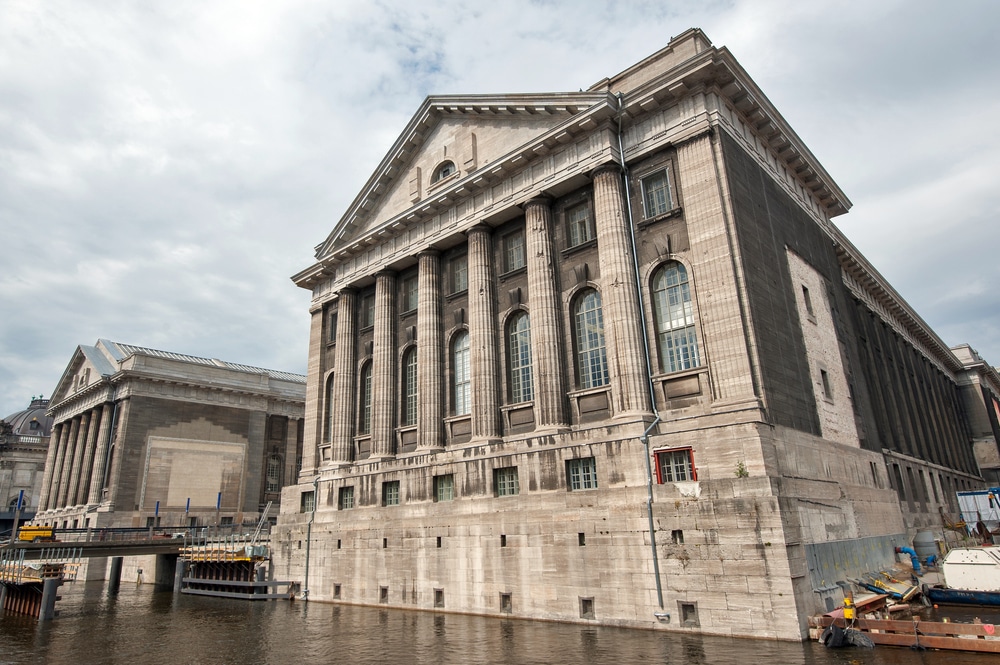 Source: pio3 / Shutterstock
Source: pio3 / ShutterstockIn the early 20th century a wave of archaeological excavations in today’s Anatolia left Germany with some staggering ancient monuments that needed a whole new museum building to house them.
These are accompanied by collections for the Middle East and Islamic art, all in the cavernous Pergamon Museum, which was ready by 1930 and has a Stripped Classicist style.
Naturally the showpiece is the Pergamon Altar, built in the 2nd century BCE and composed of a broad stairway, 20 metres wide, and a colonnade.
The base is adorned with a stunning sculpture in high relief depicting the battle between the Giants and the Olympian gods. Also with humbling dimensions is the Market Gate of Miletus, from the 2nd century CE and the front segment of Babylon’s Ishtar Gate(575 BCE).
Also astonishing are the deftly moulded pieces from the facade of the 8th-century CE Umayyad palace of Qasr Mshatta and the panelled reception hall of a 17th-century Christian merchant from Aleppo.
Website: https://www.smb.museum/en/museums-institutions/pergamonmuseum/home/
4. Berlin Wall Memorial
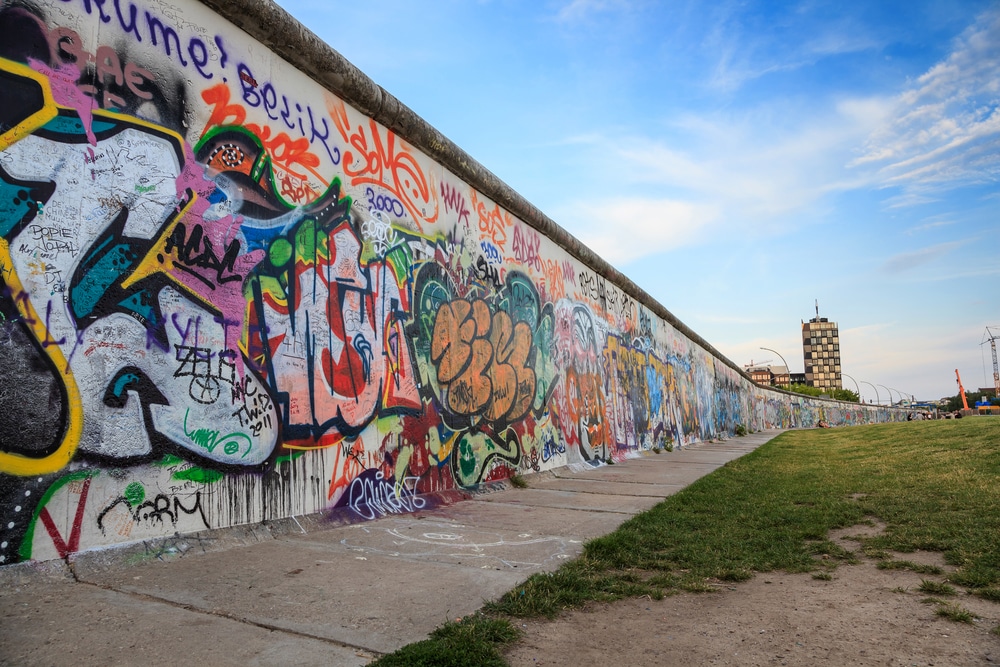 Source: Noppasin Wongchum / Shutterstock
Source: Noppasin Wongchum / ShutterstockTo get to grips with the Berlin Wall it’s worth heading to Bernauer Straße, which immediately after the Second World War was on the dividing line between the French and Soviet Sectors.
The street itself counted as West Berlin, which meant that as the wall was going up in 1961 East Berlin residents could leap from the apartment buildings, soon to be destroyed, to cross the border.
This led to several of the wall’s earliest deaths, as well as some of its lasting images, making Bernauer Straße an apt place for an official memorial.
There’s an expansive open-air exhibition across four distinct areas, including information signs and thoughtful installations along 1.4 kilometres of the former border, all accompanied by an audioguide.
The 60-metre section in Bernauer Straße is the last surviving piece of the wall to also include the border strip behind, as well as a watchtower, to show you just how the wall developed up to the 1980s.
The documentation centre outlines the construction of the wall, and how it affected the lives of Berliners, while there’s a Chapel of Reconciliation with a memorial to the 130+ people who died or were killed trying to cross.
Website: https://www.berliner-mauer-gedenkstaette.de/en/
5. Tempelhofer Feld
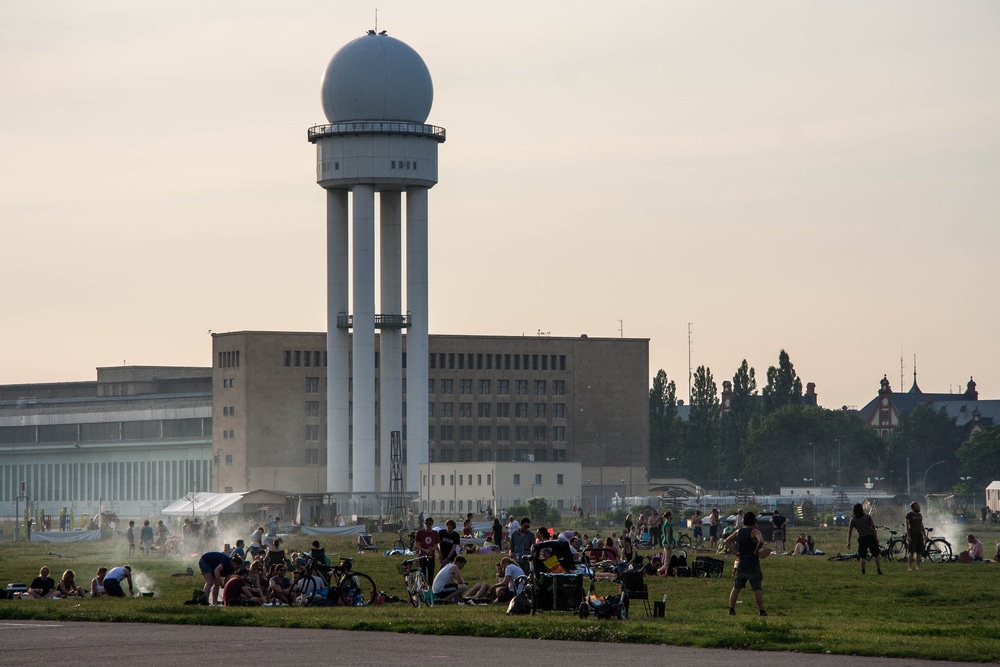 Source: DS_93 / Shutterstock
Source: DS_93 / ShutterstockOne of Berlin’s newest parks also happens to be one of its oldest, on the site of the famed Tempelhof Airport.
The big spread of asphalt on the former runways make this a prime destination for cycling, roller-skating and skateboarding, while there’s almost always a steady breeze if you fancy flying a kite.
Berlin Tempelhof Airport, which was finally decommissioned in 2008, was one of the early European air transport hubs in the interwar period. Later, the Berlin Airlift of 1948-49 was coordinated here.
Going back further, Tempelhofer Feld was used as a military parade ground from the 1720s up to 1914 when it became a popular spot for Berliners to relax and take picnics.
From the late 19th century there was also a sports complex, which hosted some major German football finals while the airport was still small in the 1920s and 1930s.
As the airport wound down, there was doubt about the city’s intentions for the site, and in 2009 demonstrators protesting against privatisation and commercialisation occupied the airport.
Now it’s a gorgeous if unorthodox public park, with generous grassy spaces, fenced-in areas for dogs and community allotments, while the vast former terminal building now hosts concerts, conventions and trade shows.
6. Topography of Terror
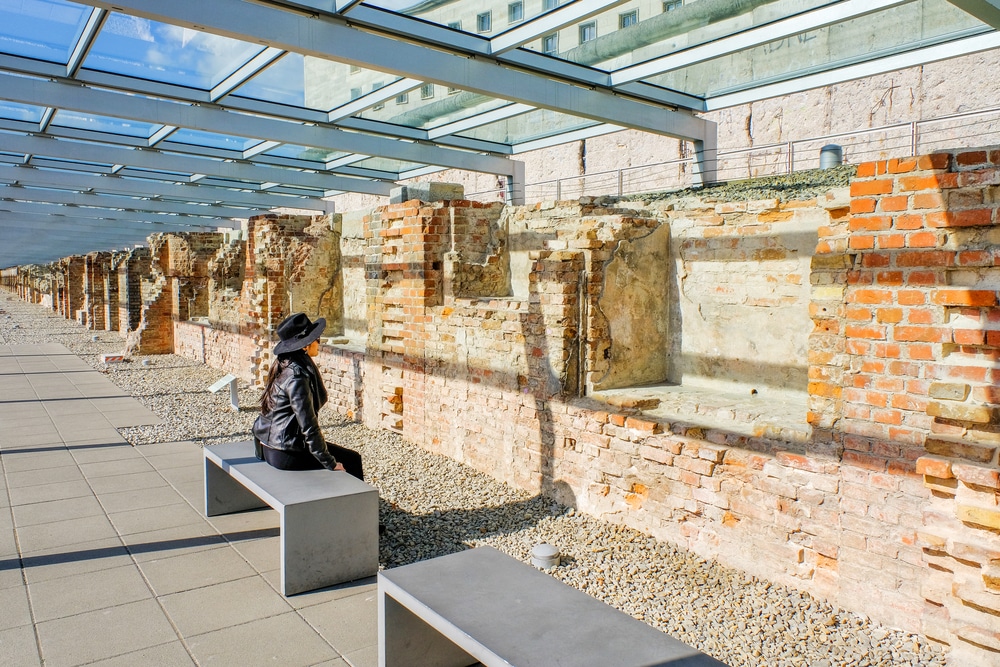 Source: SAHACHATZ / Shutterstock
Source: SAHACHATZ / ShutterstockNiederkirchnerstraße near Potsdamer Platz has a bleak past as the site of the SS Reich Main Security Office, holding the headquarters for Nazi Germany’s most notorious agencies, including the Gestapo, the SD and Einsatzgruppen.
These buildings were largely destroyed in the Second World War, and then the south side of the street became the course for the Berlin Wall.
A big section of the wall is still standing here, at a place that has become an outdoor and indoor museum lifting the lid on Nazi persecution from 1933 to 1945.
Bilingual information boards at 15 stations go into detail on the agencies and the crimes they committed across Europe. These are set against the excavated remnants of the buildings cellars, where atrocities were carried out.
The indoor Documentation Centre opened in 2010, with a main exhibition that follows the role of these organisations from the National Socialist takeover to the end of the Second World War. There’s a smartphone audio guide available throughout, for even more insight.
Website: https://www.topographie.de/en/
7. Alexanderplatz
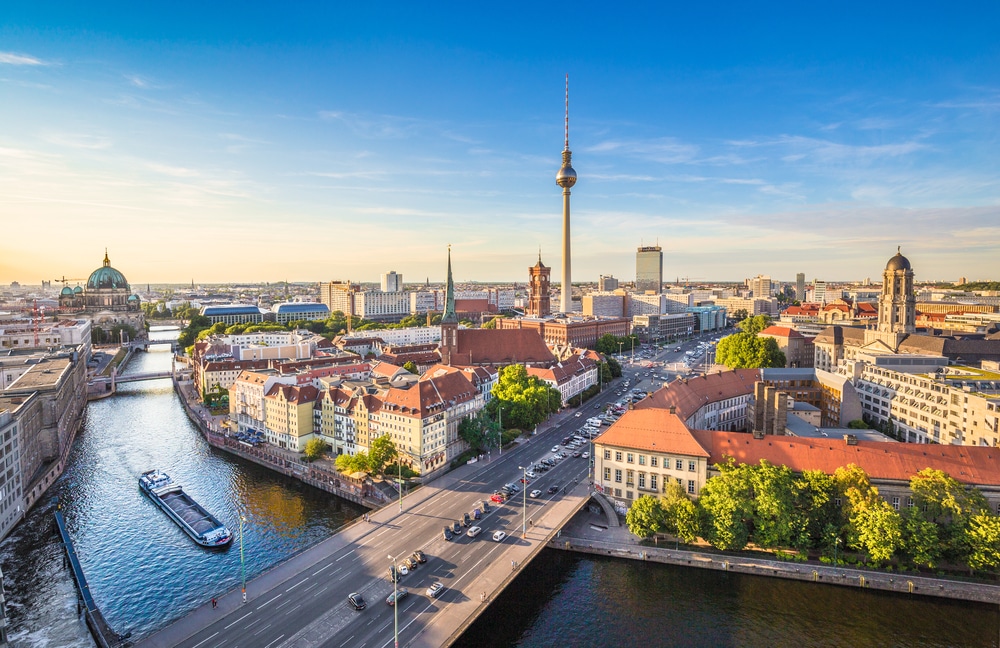 Source: canadastock / Shutterstock
Source: canadastock / ShutterstockIf you’re looking for a place to begin your Berlin odyssey you could do a lot worse than the city’s largest square. One look at Alexanderplatz and the sky-scraping Fernsehturm (TV Tower) and you’ll know that you’re in the main gathering space for the former East Berlin.
The square was redeveloped as a pedestrian zone in the 1960s, furnishing it with the austere, almost oppressive architecture that confronts you today.
It was here during the Peaceful Revolution in 1989 that more than 200,000 people gathered in the largest demonstration in the 40+ years of the GDR.
As it was during its golden days in the 1920s and early 30s, Alexanderplatz is a pulsating nerve centre for transport, shopping and entertainment. A little holdover from the 60s is the Space Age Weltzeituhr (World Clock), showing the time in 148 cities.
The inimitable Fernsehturm, completed in 1969, is one Berlin’s main identifiers and has an elevator that will shoot you up to the observation platform, 203 metres above the square, in just 40 seconds.
8. Jewish Museum
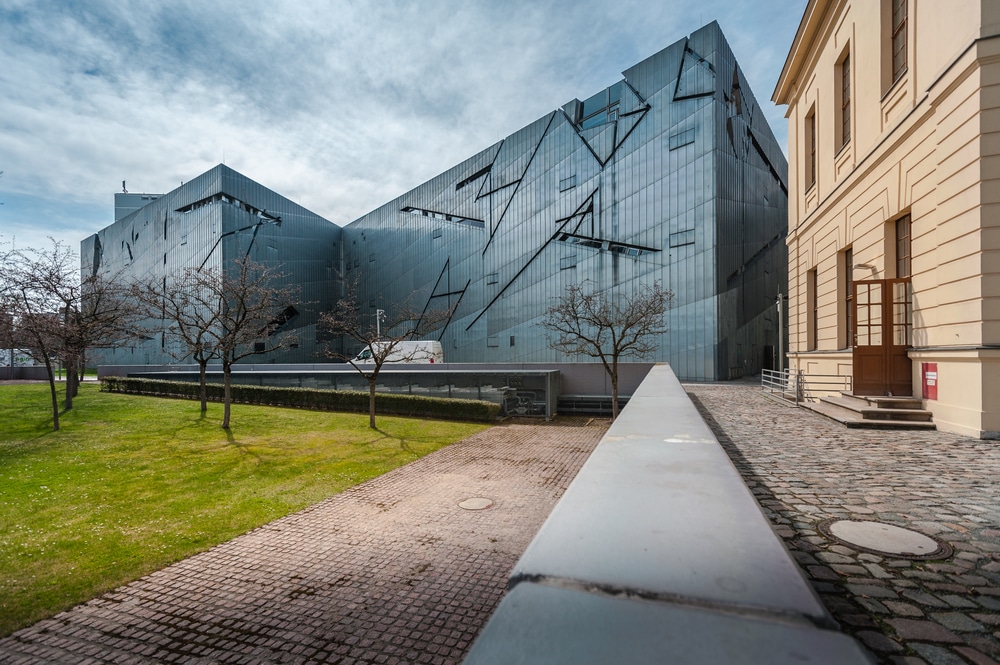 Source: WorldWide / Shutterstock
Source: WorldWide / ShutterstockBerlin’s first Jewish museum was shut down during Kristallnacht in 1938, and calls for a new institution in West Berlin were growing as early as the 1970s.
Daniel Libeskind’s Deconstructivist building, with its radical zigzag layout streaked with empty “voids” won the design competition in 1989.
This structure, opened in 1999, jars next to the museum’s older wing, the Rococo Kollegienhaus from 1735, which connected to the new zinc-clad building by an underground passage.
The Libeskind building has three axes, “continuity”, “exile” and “Holocaust”. The latter ends at the oppressive Holocaust Tower, a rectangular concrete block lit only by a crack in the ceiling.
The multisensory permanent exhibition has been updated in the last few years, and tells the story of the Jewish people in Germany from the 4th century to the present.
National Socialism and the period from 1945 of course take precedence, but there are also insights into Jewish culture, from liturgical chants to Purim graggers using interactivity and multimedia.
Website: https://www.jmberlin.de/en
9. German Historical Museum
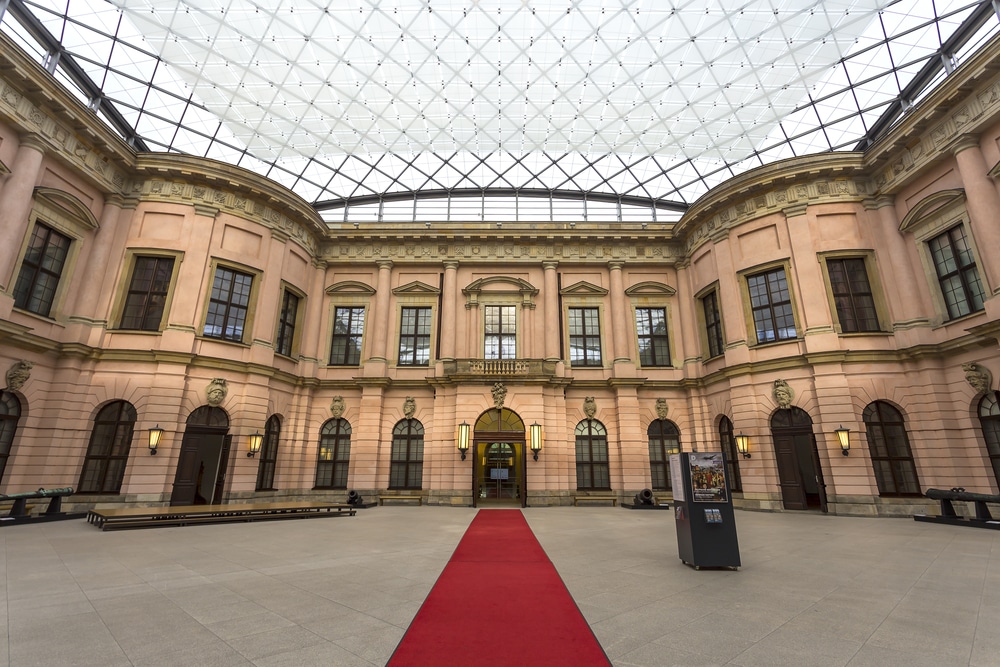 Source: Isaac Mok / Shutterstock
Source: Isaac Mok / ShutterstockThe Baroque Zeughaus (Armoury), from 1706 is the oldest building from that stately line-up on Unter den Linden, and since 2003 has housed this museum documenting Germany’s compelling history.
As you can imagine there’s a lot to sink your teeth into, over 1,500 years, encompassing Charlemagne, the evolution of the German Language, the Reformation, The Thirty Years’ War, the German Empire, the World Wars, National Socialism, the two German States and Reunification.
There are some mind-blowing things to see as you go, like the portrait of Martin Luther by Lucas Cranach the Elder (1529), Napoleon’s bicorne hat from Waterloo, a Medieval knight’s prosthetic hand and a boat used in an escape attempt by two GDR citizens .
You can also view a painting by Jewish-German Surrealist Felix Nussbaum completed just before he was deported, a dress worn by Prussian Queen Louise of Mecklenburg-Strelitz (1776-1810) and an Ottoman tent from the 17th century.
Website: https://www.dhm.de/en/
10. Gemäldegalerie
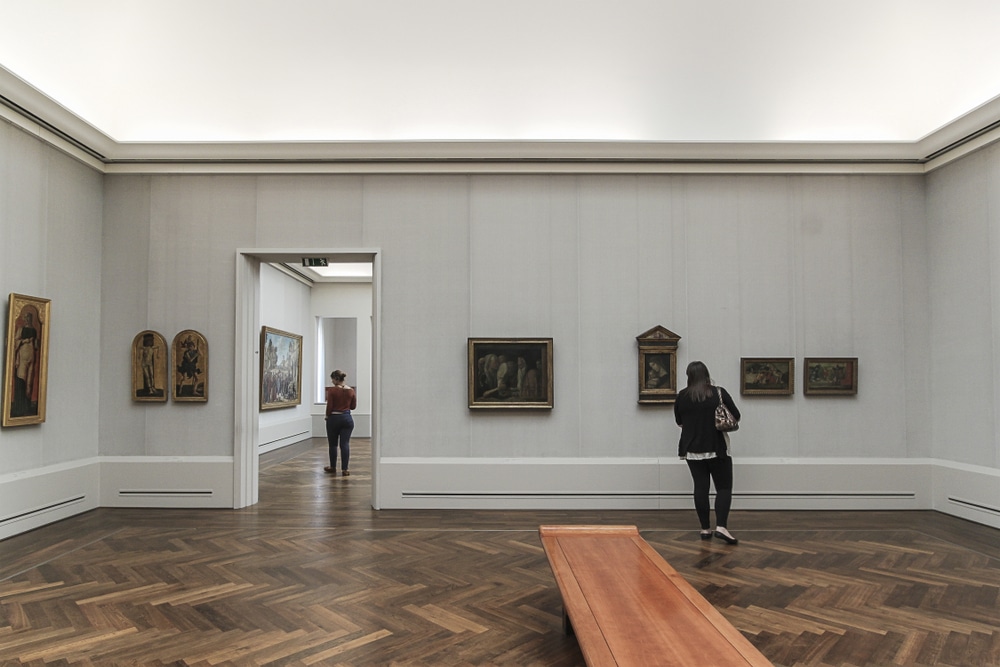 Source: Mauro La Rosa / Shutterstock
Source: Mauro La Rosa / ShutterstockJust west of Potsdamer Platz is the gallery for the collection of Old Masters belonging to the Berlin State Museums. The Gemäldegalerie has one of the world’s finest collections of European art from the 1200s to the 1700s.
The museum has a history going back to 1830 and opened in its current building in the Kulturforum in 1999.
The collection runs to more than 1,400 works, despite a big portion being lost during the Second World War and the division of Berlin.
Through 18 rooms and 41 cabinets you can delight in pieces by Caravaggio, Botticelli, Rembrandt, Titian, van Eyck, Rubens, Vermeer, Lucas Cranach, Pieter Brueghel the Elder and Albrecht Dürer.
Some world-famous works include Dürer’s Portrait of Jakob Muffel (1526), Amor Victorious (1602-1603) by Caravaggio and Joseph’s Dream (1645) by Rembrandt.
Website: https://www.smb.museum/en/museums-institutions/gemaeldegalerie/home/
11. Charlottenburg Palace
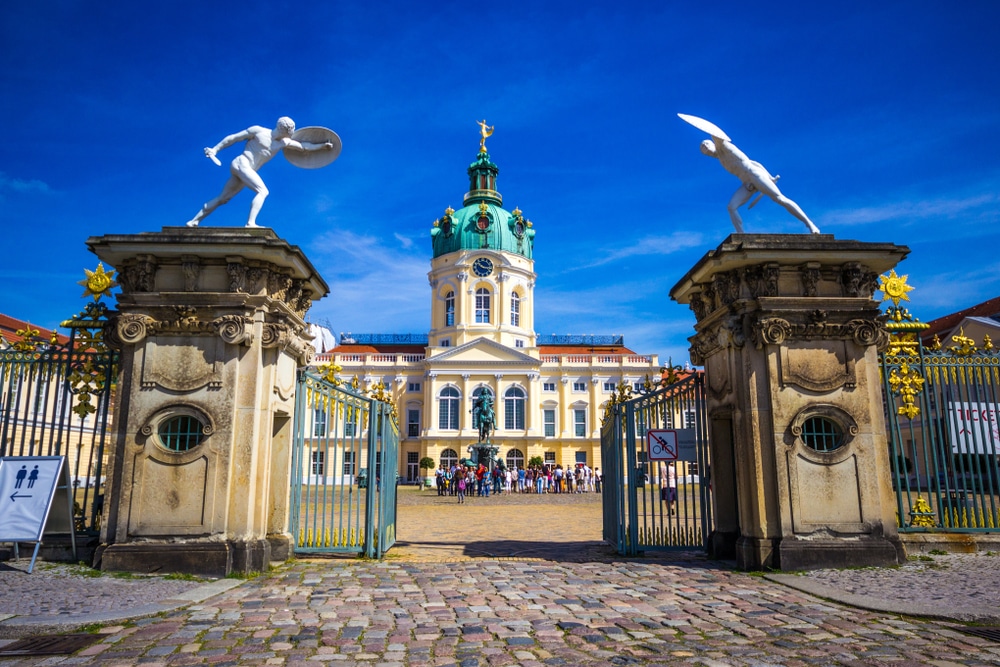 Source: Zbigniew Guzowski / Shutterstock
Source: Zbigniew Guzowski / ShutterstockThis palace was built at the turn of the 18th century at the behest of Sophia Charlotte of Hanover (1668-1705), wife of Frederick I and Prussia’s first Queen Consort.
She was known for her intellect and love of the arts, and this was her summer residence where she would pass time in the company of poets, artists, musicians and philosophers. Both the palace and the neighbourhood would be named for her after she passed away.
Adding to the central structure (Old Palace) that she commissioned, the palace was expanded and refined throughout the 18th century, and was used on and off by Prussian royalty up to 1888.
In that time Napoleon also used Charlottenburg Palace as his base after marching into Berlin in 1804. Each Hohenzollern ruler made their mark on both the interior and the palace’s exquisite gardens.
Just a few of the best bits are the Bedchamber of Frederick I, Palace Chapel and the Porcelain Cabinet in the Old Palace.
In the New Wing, see the Rococo White Hall and Goldene Galerie ballroom, and the art collection in the apartment of Frederick William III.
12. East Side Gallery
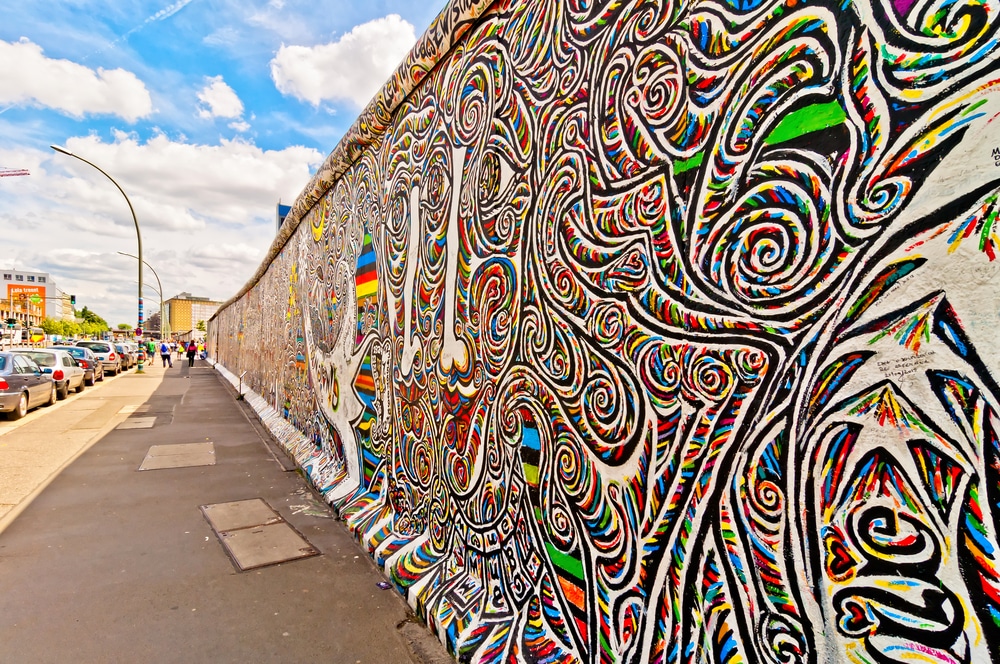 Source: Eddy Galeotti / Shutterstock
Source: Eddy Galeotti / ShutterstockAlong Mühlenstraße lining the Spree, a remnant of the Berlin Wall measuring more than 1,300 metres is a lasting, international monument to reconciliation.
This is the longest stretch of the wall still standing , becoming an open-air street art gallery in September 1990 with works by almost 120 artists from 21 countries.
If there’s one image that springs to mind right away, it may be GDR leader Erich Honecker and Leonid Brezhnev locked in a fraternal kiss, painted by Dmitri Vrubel in 1990.
The East Side Gallery became a heritage landmark in 1991 and its paintings, like a Trabant breaking through the wall, sum up the mood immediately after the barrier came down.
Others document the brutality of the GDR border regime, remembering the 140+ people who died or were killed in attempted crossings.
Website: https://eastsidegalleryberlin.de/en/
13. Tiergarten
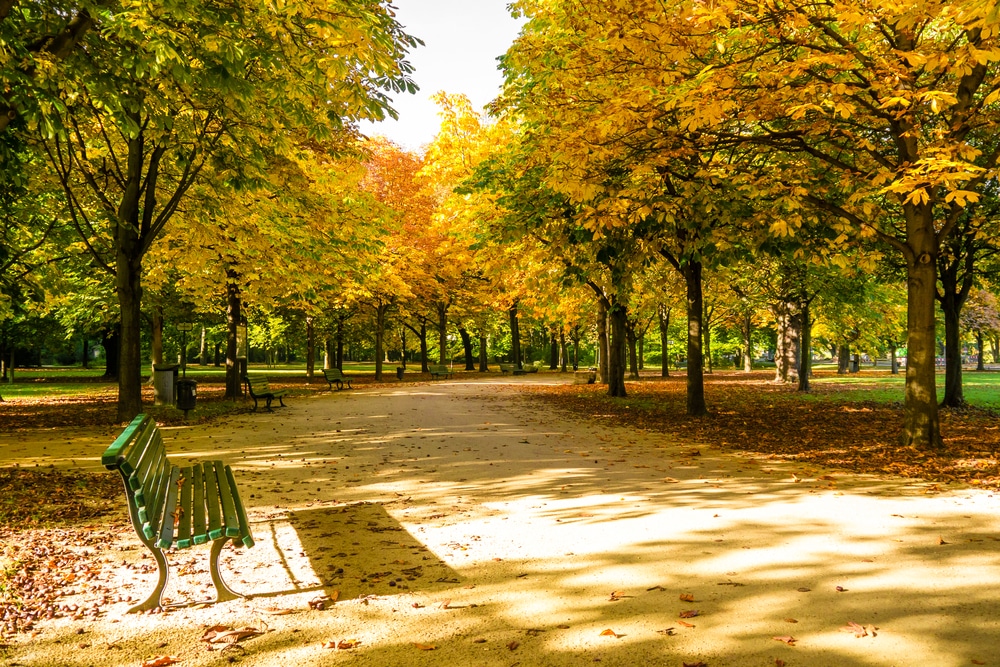 Source: SP-Photo / Shutterstock
Source: SP-Photo / ShutterstockStarting in the east at the Brandenburg Gate, a big slice of Berlin’s city centre is taken up by this densely wooded urban park, coursed with arrow-straight avenues, walkways, ponds and the Landwehr Canal.
The arteries crossing the Tiergarten meet at the Victory Column, inaugurated in 1873 to celebrate victory in the Danish-Prussian War (1864).
By the time the column was erected Prussia had also defeated Austria and France in subsequent wars, so the monument was topped with a bronze statue of the Roman Goddess Victoria, 8.3 metres tall.
The earliest mentions of the Tiergarten date to the 16th century when the woodland became a hunting ground for the Electors of Brandenburg.
The park was landscaped in the 1820s and 30s, and the Zoologischer Garten was added in the west end in 1844 (more later in the list).
Much of the Tiergarten is cloaked with trees, but what’s interesting is these were all planted after the late-1940s as the previous ones were felled for firewood in the winter of 1945-46.
There are lots of interesting things to discover in these 520 acres, including a museum for gas lanterns, a variety of gardens, a huge children’s playground on the Potsdamer Platz side.
14. Berlin Cathedral
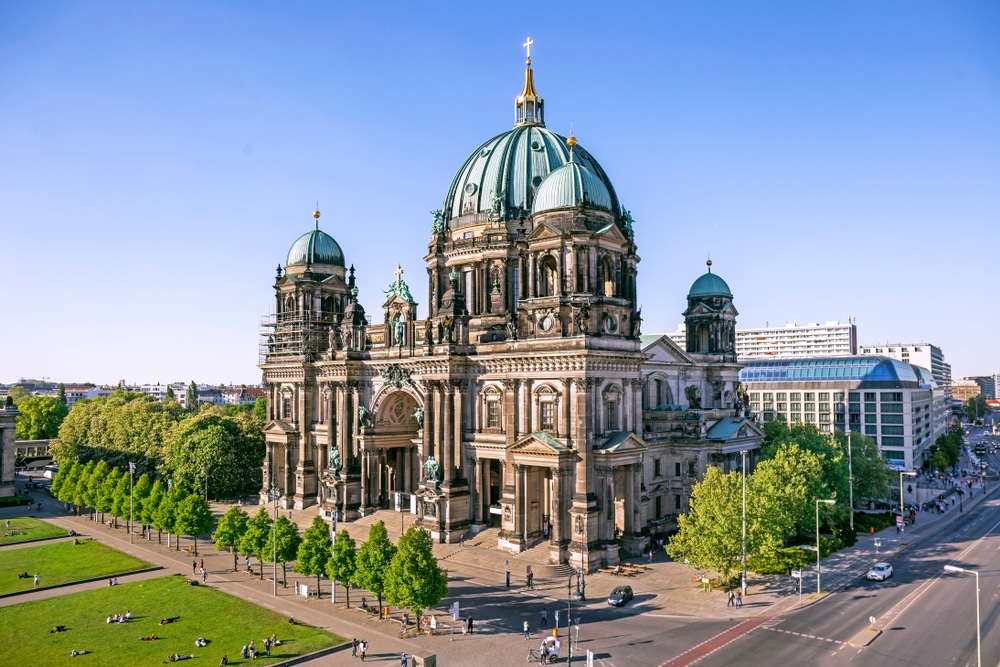 Source: Pani Garmyder / Shutterstock
Source: Pani Garmyder / ShutterstockThe largest church in the city is right on the Spree on the east side of the Museumsinsel, with a gigantic Italianate dome rising to 98 metres.
To the uninitiated, Berlin Cathedral is newer than it looks and was built between 1894 and 1905 to house the Hohenzollern Crypt when this was still the location for their City Palace.
The latter is Germany’s most important set of dynastic tombs, to rival the Cathedral of Saint-Denis in Paris or the Capuchin Crypt in Vienna.
Inevitably the church was badly damaged in the war, and the exterior was restored to a simplified design by 1984, while work continued on the interior until 2002. It’s a good idea to take a guided tour, departing every 20 minutes.
Anton von Werner (1843-1915) produced much of the art inside, like the mosaics depicting the Beatitudes of the Sermon on the Mount and the stained glass in the chancel windows showing the Life of Jesus.
Be sure to climb the 270 steps to see the cathedral and city from the dome’s outer walkway.
Website: https://www.berlinerdom.de/en/
15. Potsdamer Platz
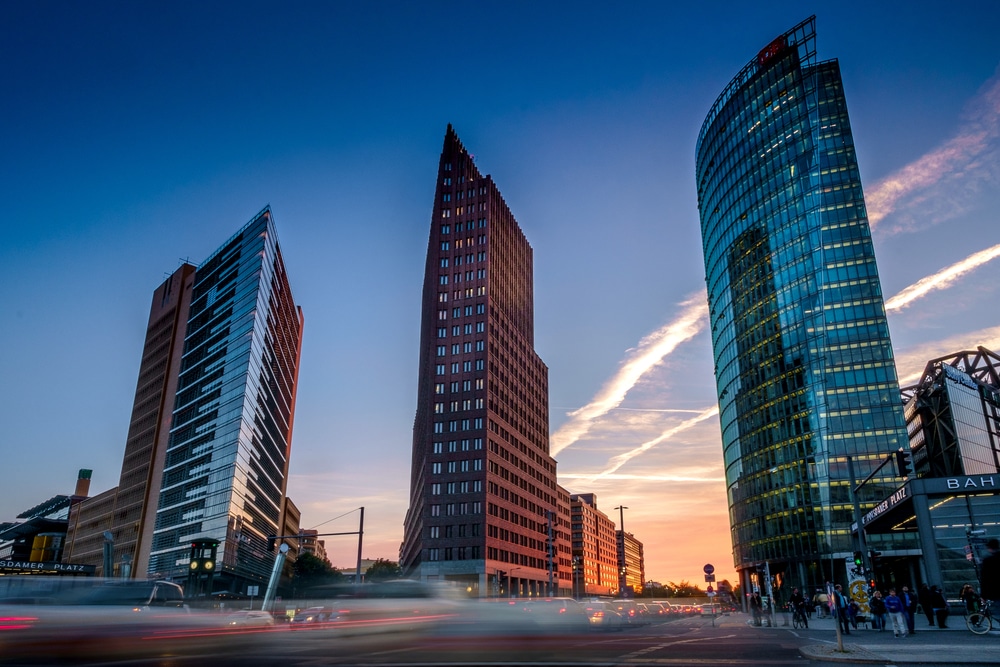
This massive public square has been on a real journey, encapsulating all of Berlin’s changing fortunes over the last century. In the 1920s and 30s Potsdamer Platz was a vibrant intersection, and Berlin’s answer to Times Square or Piccadilly Circus.
Such was the mayhem that the first traffic lights in continental Europe were set up here in 1924 to bring some order to the endless flow of buses, trams and cars that converged at this spot.
Potsdamer Platz wasn’t just an animated transport hub; it was also the thumping heart of Berlin’s world-famous nightlife scene. Like most of Berlin, the square was laid to waste in the war, but was then divided by the Berlin Wall.
A moving scene in Wim Wenders’ Wings of Desire (1987) shows an older man reminiscing about the bustling square before the bleak backdrop of the wall.
It’s hard to believe that the Potsdamer Platz of that movie is little more than a generation removed from the contemporary cityscape that confronts you as you step out of the station.
In February the Sony Centre is the high-tech backdrop for the Berlinale, and in the depths of winter square takes on an Alpine flavour, with a giant ice rink and the longest toboggan run in Europe.
16. Gendarmenmarkt
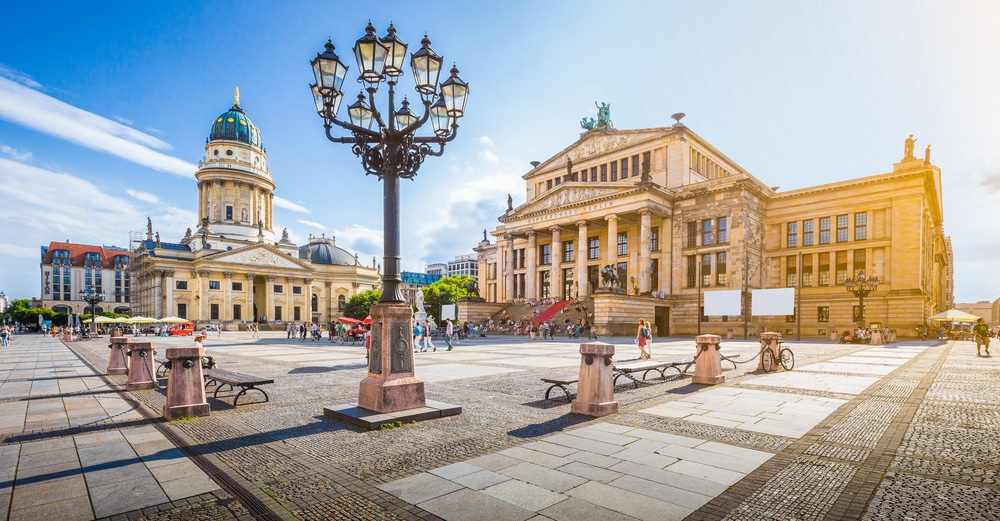 Source: canadastock / Shutterstock
Source: canadastock / ShutterstockBerlin at its grandest, Gendarmenmarkt is a monumental square that was first plotted under Frederick I of Prussia at the beginning of the 20th century.
The plaza took on its current shape in 1773 after the departure of the stables for the Gens d’Armes, cuirassier regiment, which gave the square its name.
What you see today is an imposing assortment of Baroque and Neoclassical, resurrected after the destruction of the Second World. On the north side is the Französischer Dom (French Church), built by the Huguenot Community at the very beginning of the 18th century.
This faces off against the Deutscher Dom (1708), a Lutheran church rebuilt in the 1990s and now housing an exhibition for democracy.
Dominating the west side are the stairway and Ionic portico of Konzerthaus Berlin (1821), seat of the Berlin Symphony Orchestra and regarded as one of the best concert venues in the world for acoustics.
Finally, at the bottom of the steps is the monument to the poet, Friedrich Schiller (1759-1805), first installed in 1871.
The work was commissioned on Schiller’s 100th birthday, but the unveiling was delayed by the Franco-Prussian War.
17. Berlin-Hohenschönhausen Memorial
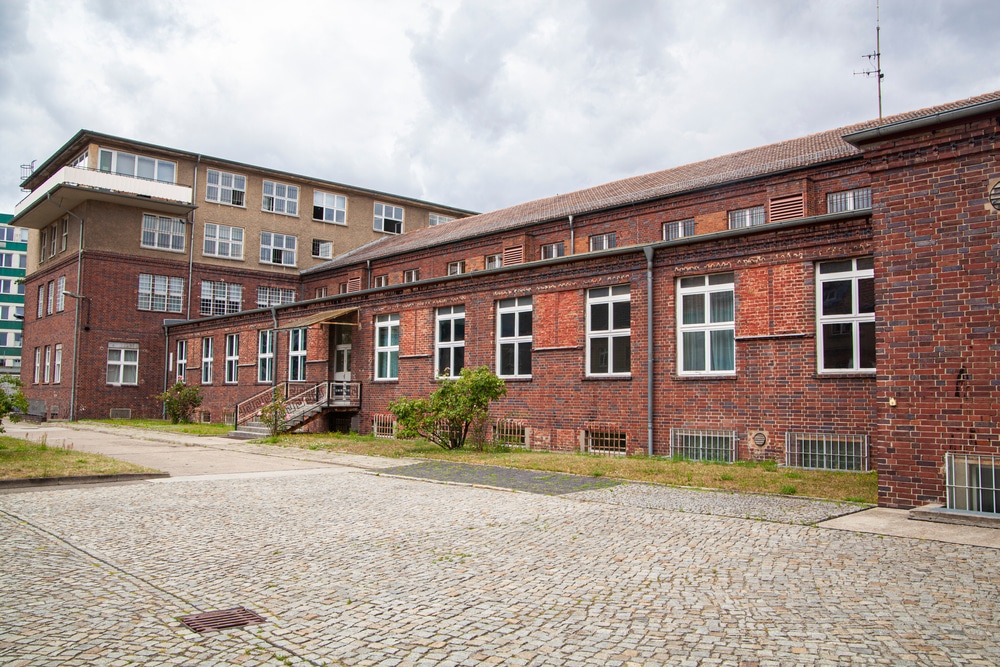 Source: Aksru44 / Shutterstock
Source: Aksru44 / ShutterstockThe Lichtenberg district is home is the setting for the main political prison for the Staatssicherheitsdienst (Stasi). From1946 to 1990, opponents of the GDR’s regime and people who helped others cross the border to the west found themselves in this secret facility, which became a museum in 1994.
Hohenschönhausen prison was excluded from all maps, and was never stormed when the Berlin Wall came down, which gave its authorities the chance to destroy valuable evidence about its history and functions.
Instead, our knowledge of what went on here has been pieced together by the accounts of prisoners.
Much of the building looks as it did during the GDR, and you can tour it in the company of a former inmate, explaining how the policy of psychological intimidation was put into practice.
There’s a permanent exhibition with hundreds of photographs and artefacts to paint to help you glimpse the experience of prisoners, while short-term exhibitions explain just how all-encompassing Stasi surveillance was.
Website: https://www.stiftung-hsh.de/en
18. Neues Museum
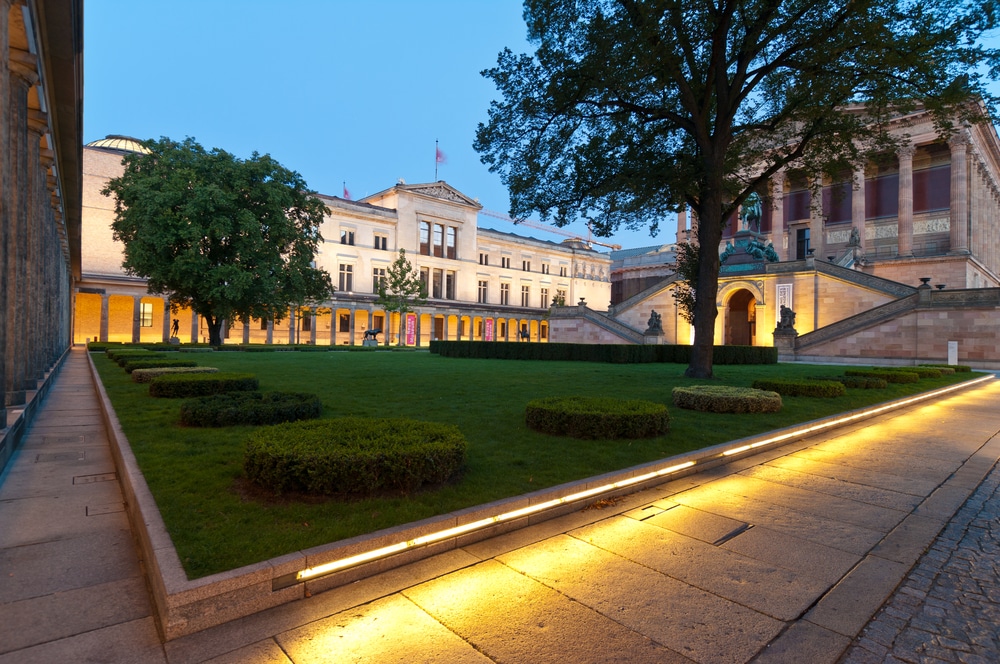 Source: mkrberlin / Shutterstock
Source: mkrberlin / ShutterstockFinally reopened in 2009 after being all but destroyed in the war, the Neues Museum combines the magnificent 1840s Neoclassical building by Friedrich August Stüler with new architecture by David Chipperfield.
Inside is the Egyptian Museum, the papyrus collection, parts of the collection of ancient art and the prehistory and early history collection.
So, you can immerse yourself in 4,000 years of Ancient Egyptian and Nubian history and check out spellbinding European and Asian finds from the Stone Age to the Middle Ages.
The star of the show is the iconic Nefertiti Bust, crafted around 1345 BCE, crafted by the court sculptor Thutmose and discovered in his workshop in Amarna in 1912.
For an absorbing piece from Berlin’s distant past there’s the Berlin Gold Hat, from the late Bronze Age, some 3,000 years ago.
Occupying its own room in the museum, this long, conical brimmed headdress is made from thin gold leaf and its many bands, decorated with little hammered bulges, are thought to have served as a lunisolar calendar.
Website: https://www.smb.museum/en/museums-institutions/neues-museum/home/
19. Kaiser Wilhelm Memorial Church (Gedächtniskirche)
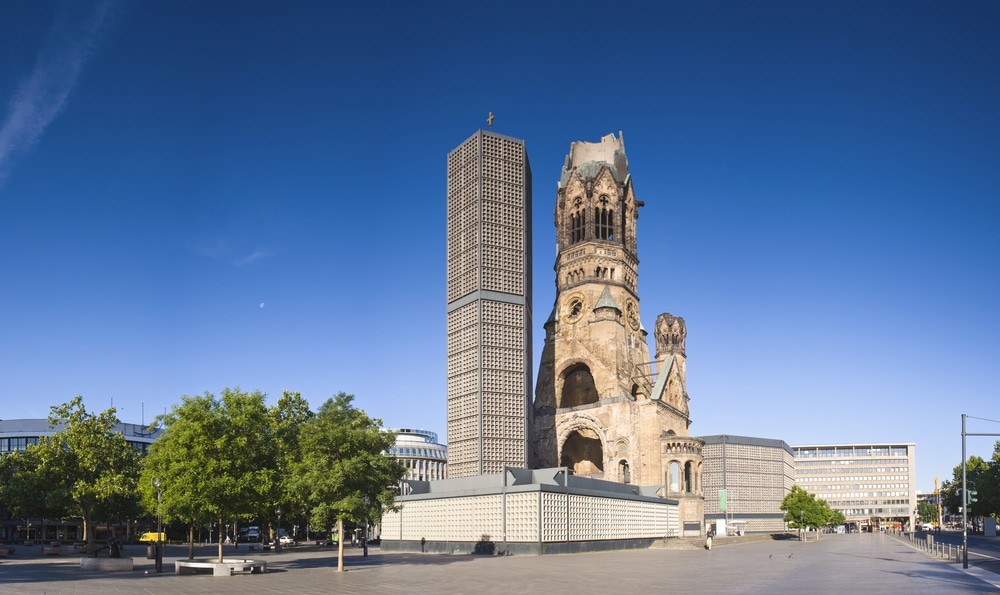 Source: Matthew Dixon / Shutterstock
Source: Matthew Dixon / ShutterstockBy Zoologischer Garten on Breitscheidplatz, the Gedächtniskirche is a key landmark for West Berlin and a monument to the city’s destruction in the Second World War.
What catches your eye is the bombed-out spire of a neo-Romanesque church built for Wilhelm I by his grandson Wilhelm II at the turn of the 20th century.
That building was all but destroyed in a bombing raid in 1943, and from 1959 to 1963 was accompanied by four Modernist structures composed of concrete, glass and steel.
The new main church building can hold more than 1,000 worshippers, with walls made up of more than 21,000 stained glass inlays, mostly in blue, but with flourishes of green, red and yellow.
In the old spire meanwhile is a memorial hall against war and destruction, and houses a cross made from nails from the destroyed roof of Coventry Cathedral, England, also destroyed in the Second World War.
Website: https://www.gedaechtniskirche-berlin.de/page/1611/information-visitors-where-find-us
20. Bode Museum
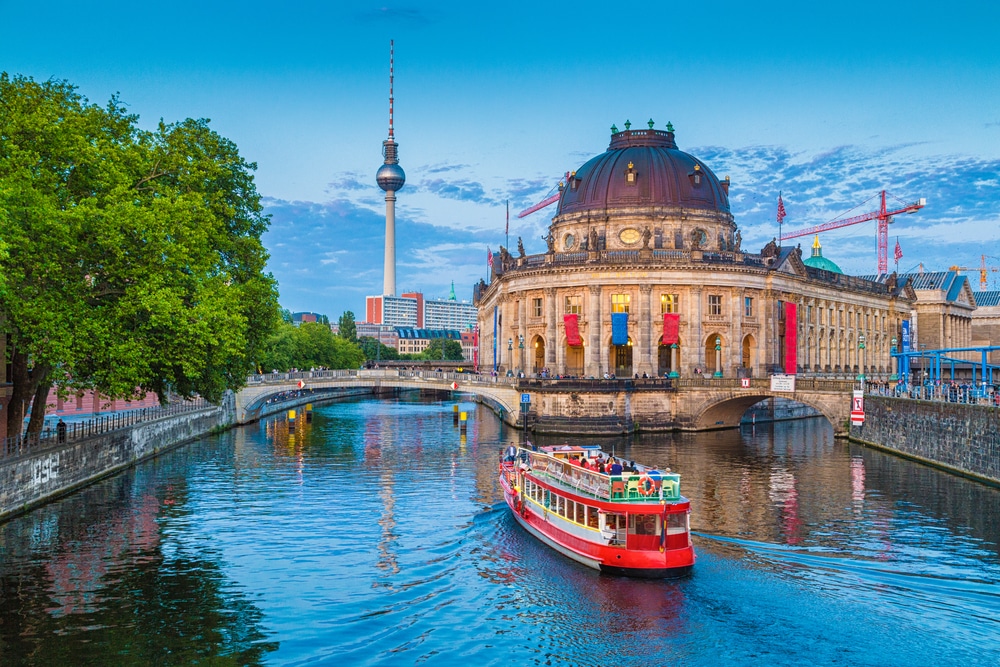
In a magnificent neo-Baroque building on the waterfront at the north end of the Museumsinsel is a combining three main collections from the Berlin State Museums.
These are the Sculpture Collection, Coin Cabinet and the Museum for Byzantine Art. The sculpture collection has pieces from the Middle Ages to the 18th century produced across Europe but with a focus on Italy.
Ready to inspire you are works by Donatello and Luca della Robbia, but also German late-Gothic artists like Tilman Riemenschneider.
In the Byzantine Museum you can admire icons, mosaics, sarcophagi, ornamental sculpture from across the central and eastern Mediterranean, dating from the 3rd to the 15th century.
The coin cabinet presents one of the world’s great numismatic collections, with 4,000 coins and medals presented in four rooms on the second floor, from a collection totalling more than 500,000.
Website: https://www.smb.museum/en/museums-institutions/bode-museum/home/
21. Memorial to the Murdered Jews of Europe
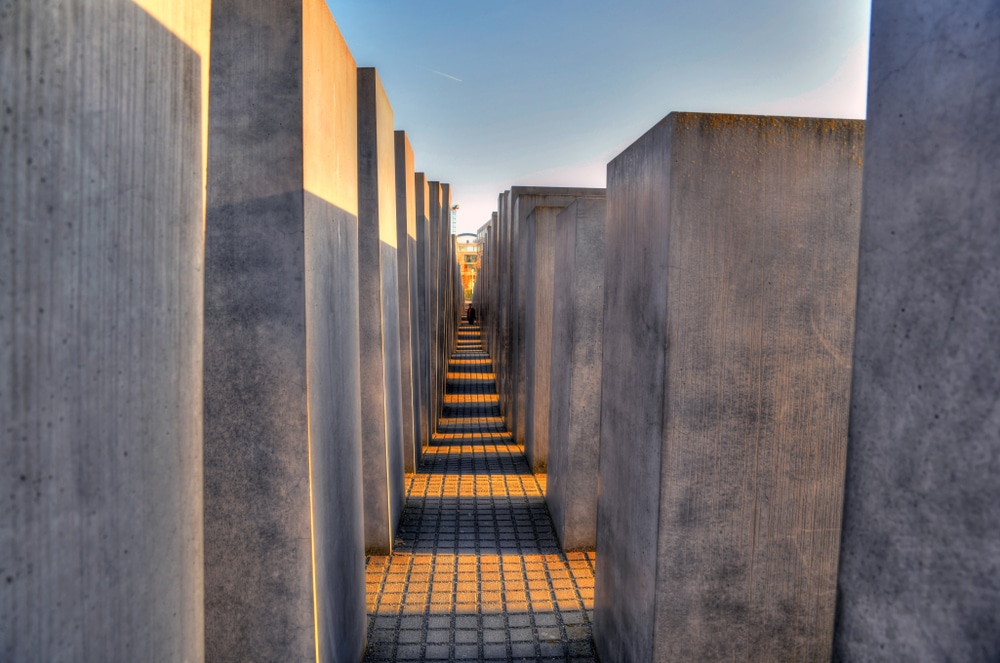 Source: The World in HDR / Shutterstock
Source: The World in HDR / ShutterstockThis undulating field of 2,711 rectangular concrete blocks, or “stelae” was built in 2003-04to commemorate the Jewish victims of the Holocaust.
The memorial lies just south of the Brandenburg Gate, with slabs varying in height and arranged in 54 north-south rows and 87 east-west, but at a slight angle.
The individual blocks have no symbolic meaning, but rather the purpose of this abstract monument is to draw you into its impressive but bleak grid of corridors, evoking the atmosphere of a graveyard, and the systematised brutality of the Holocaust in its sense of order.
There’s a visitor centre under the east side of the field, the ceilings have rectangular coffers reminding you of the blocks overhead.
The exhibition combines a timeline of the Jewish Holocaust with a room recording the fates of specific Jewish families and another showing the name of every known Jewish victim of the Holocaust.
Website: https://www.stiftung-denkmal.de/en/
22. Sanssouci
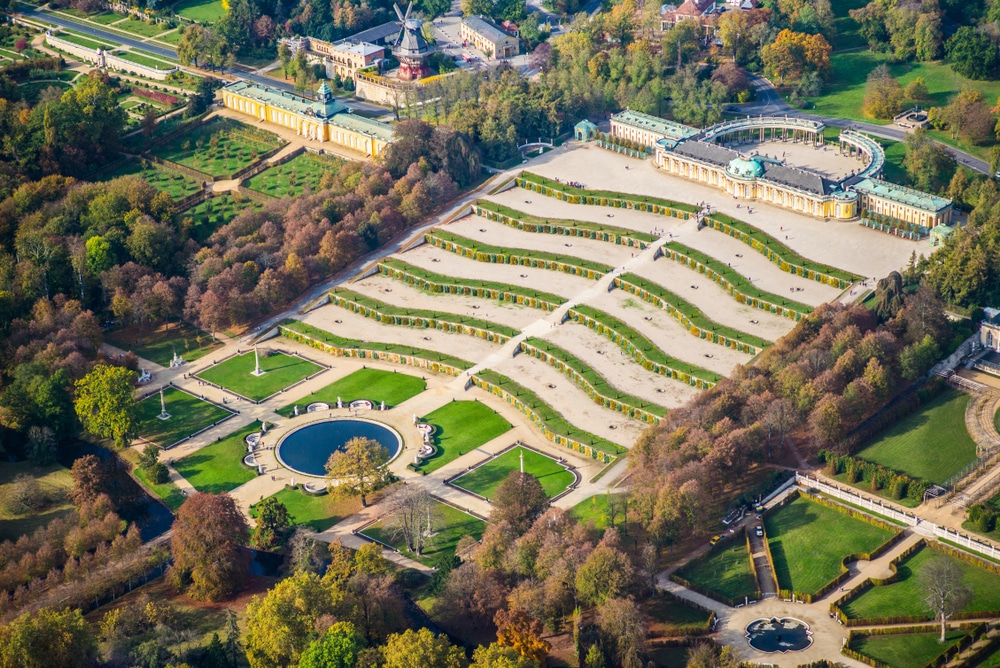 Source: Mario Hagen / Shutterstock
Source: Mario Hagen / ShutterstockFor a day trip and something very different from Berlin you could catch the S-Bahn (S7) out to Potsdam to visit the summer retreat of Prussian King, Frederick the Great (1712-1786).
This Rococo palace, ensconced in a landscape sprinkled with follies, was built from 1745 to 1747 as an escape from the pomp and strictures of the Berlin court.
The name Sanssouci “without worries” sums up what the property meant to him; a personal sanctuary where he’d relax with his dogs, and not a seat of power.
The enduring image of the low-rise palace is the south facade, in which the corps de logis and two wings stand above the terraces of a vineyard.
In accordance with his wishes, the king was buried on the vineyard’s uppermost terrace. The palace was only supposed to last for Frederick’s lifetime, but was preserved, and the grand but stylish interiors tell you much about the king’s own taste.
Just a few highlights are the Marble Hall and its white Carrara columns, the Dining Room with painting by 18th-century French artists, the lush circular library and the Voltaire Room, where the philosopher stayed in the early 1750s.
Website: https://www.spsg.de/en/palaces-gardens/object/sanssouci-palace/
23. Zoologischer Garten
 Source: Oscity / Shutterstock
Source: Oscity / ShutterstockThe most-visited zoo in the whole of Europe is at the west end of the Tiergarten and is recognised by its iconic gateway.
The oriental-style Elefantentor, dating to 1899, is hewn from Elbe sandstone and footed by two monumental elephants. The zoo also happens to be the oldest in the country, going back to 1844, and has an almost unrivalled diversity, with nearly 1400 different species.
The Aquarium is a real standout, with more than 9,000 animals from blacktip reef sharks to caimans in this building from 1913.
The bird house is the largest in Europe, housing a walk-through aviary, while there are crowd-pleasing pavilions for rhinos, elephants, monkeys, giant pandas (one of only two in Germany), hippos, penguins, nocturnal animals and predators like big cats.
Website: https://www.zoo-berlin.de/en
24. Altes Museum
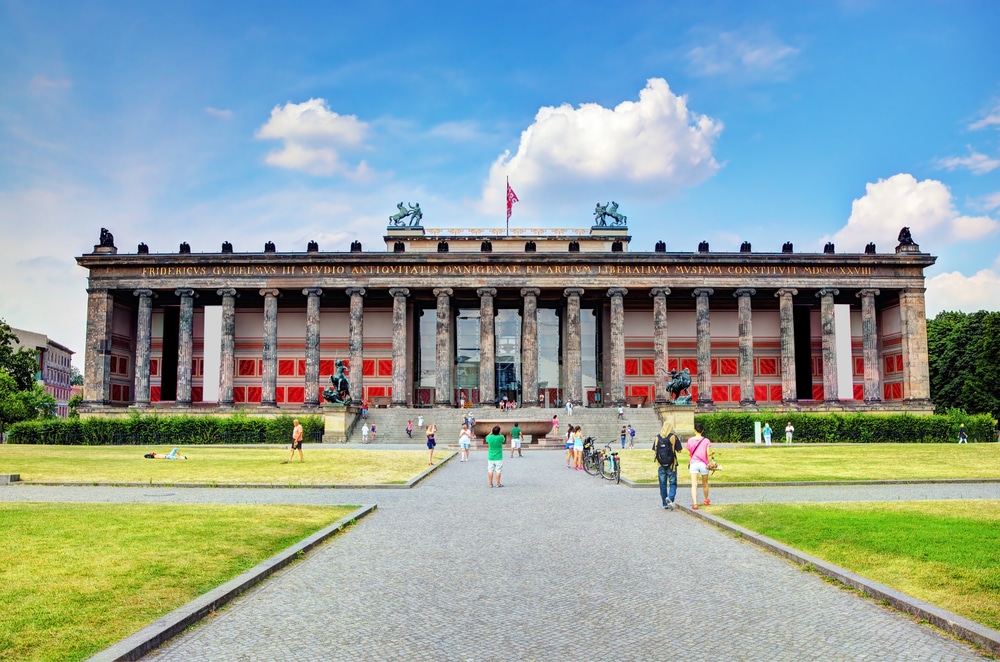 Source: PHOTOCREO Michal Bednarek / Shutterstock
Source: PHOTOCREO Michal Bednarek / ShutterstockDuring a visit to the Museumsinsel give yourself time to see the island’s original museum, the Altes Museum, which was conceived as a public showcase for the royal art collection and was opened in 1830.
With its enormous Ionic portico of 18 tall pillars, this is possibly the finest of all of the island’s Neoclassical buildings, and after the war it was the first to undergo a reconstruction. Since 1904 the Altes Museum has been home to the Berlin State Museums’ collection of classical antiquities.
You’ll peruse marvellous sculpture, jewellery, architectural fragments, ceramics, figurines and steeles by the Ancient Greeks, Etruscans and Romans, among others.
Some of the many must-sees are contemporaneous busts of Caesar and Cleopatra, a Roman statue of a wounded Amazon (5th century BCE), a gold fish decoration from a Scythian shield (6th century BCE) and a Greek amphora made from glass (2nd century BCE).
Website: https://www.smb.museum/en/museums-institutions/altes-museum/home/
25. Markthalle Neun
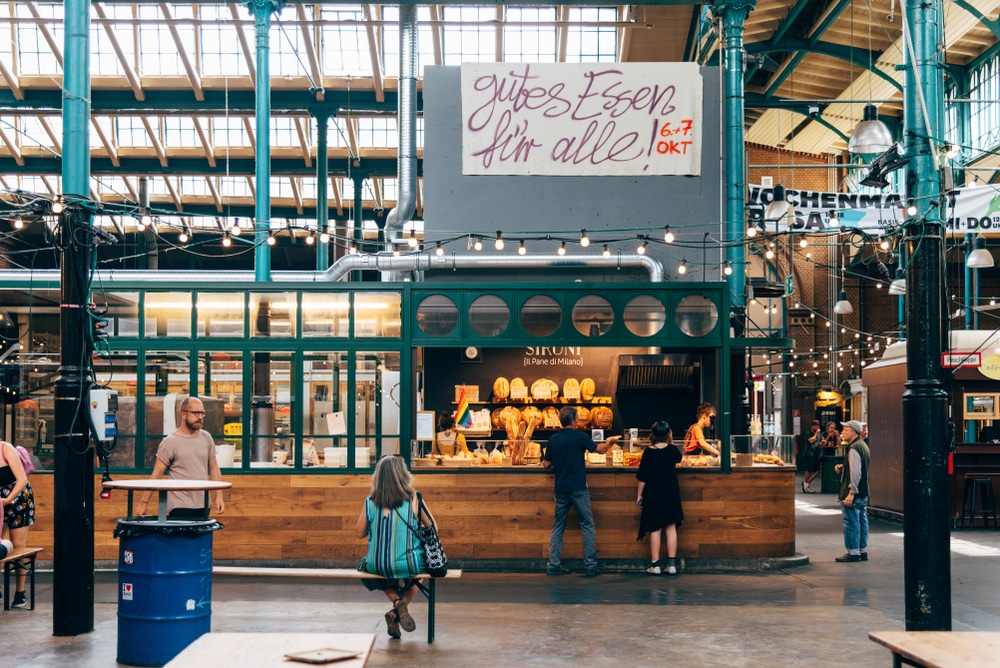 Source: JJFarq / Shutterstock
Source: JJFarq / ShutterstockBy the turn of the 20th century Berlin had 14 official market halls, and the eleventh of these first opened in 1891 on Eisenbahnstraße in Kreuzberg.
The building was damaged in the war, but was soon repaired, to the point where trade was barely interrupted. In the 2000s there was a campaign to stop the site being sold off, and a restoration was completed in 2011, 120 years after it first opened.
If you need to stock up on fresh produce there’s a classic weekly market Tuesdays, Fridays and Saturdays, dealing in organic and seasonal fruit, vegetables, meat, dairy and more from the Berlin area.
Whatever day you come, apart from Sunday, there’s a delectable range of creative specialty food and drink stores to choose from, as well as a cafe and Italian bakery.
Meanwhile Thursday, 17:00-22:00, is all about street food, whether you’re in the mood for Thai dumplings, tacos, British savoury pies, tofu, tapas or crêpes.